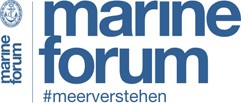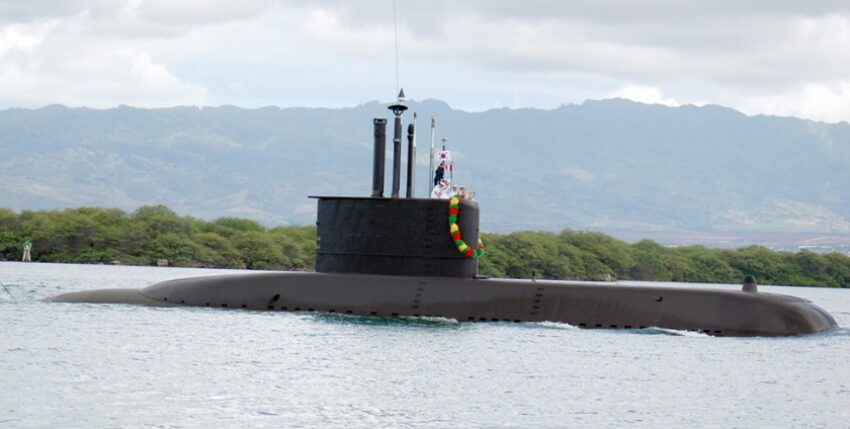The South Korean navy is continuously working to further develop its capabilities. Its state-of-the-art submarines largely incorporate technology developed domestically.
On 30 March 2023, the keel of a conventionally powered submarine was laid at Daewoo Shipbuilding & Marine Engineering (DSME) in Okpo, South Korea, which is exceptionally large with a length of 89 metres and a displacement of 3,600 tonnes. What is particularly remarkable about this new boat, however, is the fact that the future Lee Bong-chang will have ten bays for launching submarine-launched ballistic missiles (SLBMs).
The Lee Bong-chang is already the fourth unit of the South Korean KSS-III project and the first of a slightly larger version. The first unit of this ship class, The Dosan Ahn Changho (SS-083) and its two sister ships Ahn Mu and Shin Chae-ho only have six launch tubes for missiles. The Dosan Ahn Changho made headlines in September 2021 when it successfully launched a ballistic missile - the first ever submarine with an air-independent propulsion system. Further successful missile tests by the Dosan Ahn Changho followed in 2022. Let's take a look at the development of this highly ambitious conventional submarine project.
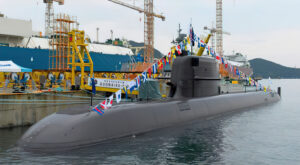
technological leap made, photo: DSME
The Republic of Korea Navy (ROKN) is undoubtedly one of the best-equipped navies in the world today. With around 70,000 active soldiers and over 150 floating units, it can now be described as a true blue-water navy. As of April 2023, its inventory included two helicopter carriers, twelve guided missile destroyers and 13 guided missile frigates as well as 19 conventionally operated hunting submarines, most of which have German roots to date.
In the decades following the Korean War, the South Korean navy mainly relied on second-hand surface ships from the USA. It was not until the early 1980s that the country began to construct its own large surface vessels. During this period, the South Korean navy leadership started to build a submarine weapon, which was still modest at first. This began in 1985 with two Cosmos SX-506 mini-submarines (23 m, 75 tonnes) developed in Italy, followed by five larger Cosmos SX-756 boats (25 m, 80 tonnes), known as the K-class, which were put into service from 1989.
The East Asian country gained its first experience in the construction of "real" submarines with the three units of the Dolgorae class (25 m, 175 tonnes) built at the Korea Takoma Shipyard (now HJ Shipbuilding & Construction), which joined the fleet between 1985 and 1991. All three boats were decommissioned by 2016; two of the boats have been preserved as museum ships.
Between 1993 and 2001, a total of nine boats of the Chang Bogo class followed, which is a variant of the German type 209/1200 and, as the type designation implies, displaces around 1200 tonnes. This submarine design has proven itself dozens of times over for decades in many navies. The type ship was built at the Howaldtswerke in Kiel, the following two boats were built from kits prefabricated in Germany and finally assembled in South Korea, while the subsequent six boats were finally built completely at DSME in Okpo.
Some of the boats have since been extended from 56 to 61 metres and, according to various reports, have been equipped with an air-independent propulsion system based on fuel cells in recent years. The nine boats of the Chang Bogo class are the first component of the Korean Attack Submarine programme, which consists of a total of 27 boats and is officially known as KSS in Korean.
The programme has been helping the state to build a powerful submarine weapon since 1993 and is not due to come to an end until 2029. The Chang Bogo class is also referred to as KSS-I and is divided into three construction batches, each with three boats.
As mentioned, Howaldtswerke was still heavily involved in the first construction batch KSS-I Batch-I, while the construction batches KSS-I Batch-II and Batch-III were built almost entirely by DSME. These last three boats of Batch-III are capable of firing Harpoon anti-ship missiles via the eight torpedo tubes with a diameter of 533 millimetres.
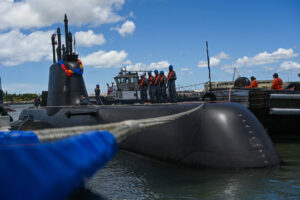
After the Chang Bogo class boats, which were designed more for coastal waters and marginal seas, the South Korean navy concluded a contract with HDW in December 2000 for the delivery of material packages for the licence production of three 2014 class boats at Hyundai Heavy Industries in Ulsan, which are known as the Sohn Wonyil class after the first unit. The 65-metre-long boats, which displace around 1700 tonnes when submerged and have fuel cell-based, external air-independent propulsion, are among the most modern conventionally powered submersibles in the world.
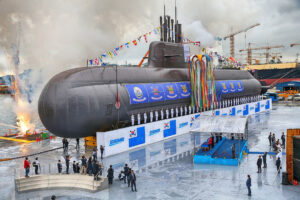
In December 2008, South Korea ordered six more boats of this type, which were to be built alternately at Hyundai Heavy Industries (HHI) and Daewoo Shipbuilding & Marine Engineering in Okpo. The last Shin Dol-seok unit was put into service with the South Korean Navy on 31 January 2020. All units are equipped with the UGM-84 Sub Harpoon anti-ship missile, which can be fired from submerged boats. This makes the Sohn Wonyil class extremely powerful conventional fighter submarines. The first three units are officially designated in South Korea as KSS-II Batch-I and the last six, technically slightly improved boats as KSS-II Batch-II.
KSS-III Batch-I
With the KSS-III, developed from 2007 as a joint project by DSME and HHI, the South Korean navy entered areas in terms of size that, apart from a very few conventional boats such as the Australian Collins class and the current Japanese boat classes, are otherwise reserved for nuclear submarines. With a length of 83.5 metres, a width of 9.6 metres and a draught of 7.62 metres with a displacement of 3358 tonnes (surfaced) and 3750 tonnes (submerged), the class named after the first boat Dosan Ahn Changho is truly impressive.
According to the DSME shipyard, South Korea also made a huge leap forward technically with KSS-III, as 76 per cent of all components of the submarine were manufactured in South Korea. However, according to press reports, the installed fuel cell-based, air-independent propulsion system is still based on the propulsion system used in the (originally German) KSS-II design. The sheer size of the units is also evident from the use of three decks on the boats.
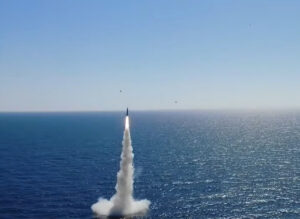
The outstanding feature, however, is the vertical launching system (VLS) for missiles between the AIP area and the conventional propulsion system in the rear, which consists of batteries and diesel generators. This VLS system consists of six launch cells and is capable of firing cruise missiles powered by turbofan jet engines such as the Hyunmoo-3 - which is similar to the American Tomahawk cruise missile - as well as Hyunmoo 4-4 ballistic missiles. The missile test mentioned at the beginning was carried out with such a missile with a range of 500 kilometres. The missile is very similar to the Russian Iskander missile, and it is unclear whether South Korea cooperated with Russia in its development - as was the case with the previous South Korean civilian missile programme.
The bow of KSS-III contains six torpedo tubes with a diameter of 533 millimetres, through which the South Korean heavyweight torpedo K 731 White Shark can be fired. The Dosan Ahn Changho class's outer skin, which is lined with sound-absorbing tiles - a method that has only been used by a few countries to date - is striking.
Western naval analysts estimate the maximum surface speed at twelve knots and the underwater speed at 20 knots. The boats have a crew of 50 and can operate submerged for up to 20 days at a time. The range is around 10,000 nautical miles.
The electronic systems installed on board come from suppliers in Europe and South Korea. The steering and diving consoles - designed for manual operation, autopilot and combined operating modes - on the Dosan Ahn Changho class boats were developed by the French ECA Group. The boats are also equipped with Continuous Active Sonar (CAS) and Flank Array Sonar (FAS) developed by South Korean aerospace company LIG Nex1 to detect, localise and classify targets. The command and weapon deployment system was developed by the South Korean conglomerate Hanwha. The Spanish defence company Indra is contributing the Pegaso Electronic Defence System for electronic warfare. The Series 30 optronic mast comes from the French defence company Safran. The system for handling the on-board weapons comes from the British company Babcock, while the six VLS launch cells are a South Korean in-house development known as the Korean Vertical Launching System, which is currently being installed on the latest South Korean destroyers and frigates.
The Dosan Ahn Changho was launched at DSME on 14 September 2018 and entered service with the Korean Navy on 13 August 2021. The second boat, Ahn Mu, was launched on 10 November 2020 and entered service on 20 April 2023. The third unit, Shin Chae-ho, was the first boat in the class to be built by HHI and was launched in Ulsan on 28 September 2021. The Shin Chae-ho is expected to join the fleet this year.
The future
As described at the beginning of this article, the South Korean navy is going one step further in terms of size with the fourth boat of the KSS-III project, the first Batch-II boat. Launched at the end of March 2023, the Lee Bong-chang is an impressive 89 metres long and has ten VLS launch cells. Almost all areas of the boat were redesigned for this second construction lot. For example, the command and weapon deployment system and the sonar systems were brought up to the latest technical standard.
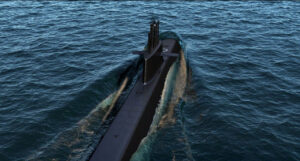
For the first time, Link 22 will be scaffolded from boat number four onwards. This enables the submarine to exchange data with allied surface and underwater units. According to the manufacturer DSME - which has again been entrusted with the production of the first two boats of the new construction batch - the South Korean share of all components on board is already 80 per cent. The third boat will again be manufactured by Hyundai, which has proven itself as Daewoo's junior partner in the KSS-III project.
The most outstanding innovation in the Batch II boats is the use of lithium-ion batteries, developed by Samsung SDI and manufactured by Hanwha. South Korea is only the second country in the world - after Japan with the Sōryū and Taigei class - to use lithium-ion batteries on submarines. According to Hanwha Defence, the Batch II boats equipped with AIP propulsion and lithium-ion batteries will have greater energy efficiency and an increased diving endurance of more than 20 days. Prior to deployment on the KSS-III project boats, the lithium-ion technology was rigorously tested under extreme conditions and the effects of fire, salt water, short circuits, heat and cold on the cells were analysed to ensure that future submarine crews are not exposed to any additional risks from the new technology.
There is currently much speculation about the improvements to the third construction batch, the KSS-III Batch-III, although more precise technical specifications are not yet known. Due to the tense security situation in East Asia - South Korea is surrounded by two "non-friendly states", the People's Republic of China and neighbouring North Korea - it cannot be ruled out that South Korea could start developing nuclear-powered submarines in the near future. Rumours to this effect have been fuelled on various occasions by comments made by South Korean politicians. In view of Australia's decision to equip the Royal Australian Navy with nuclear-powered but conventionally armed submarines as part of the Aukus project, it is quite realistic that the technologically advanced South Korea - like Australia a staunch ally of the USA - does not want to be left behind here. But even if South Korea does not choose the nuclear option, it still has one of the most powerful submarine weapons in the world - not least thanks to KSS-III.
Stefan Ulsamer is a freelance journalist specialising in marine technology.
Stefan Ulsamer
